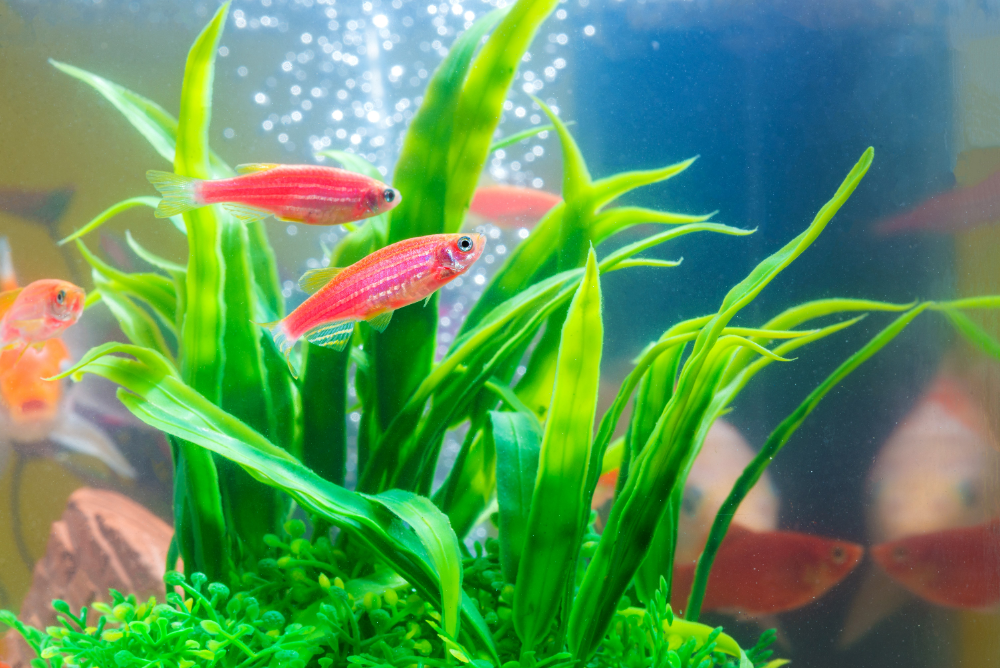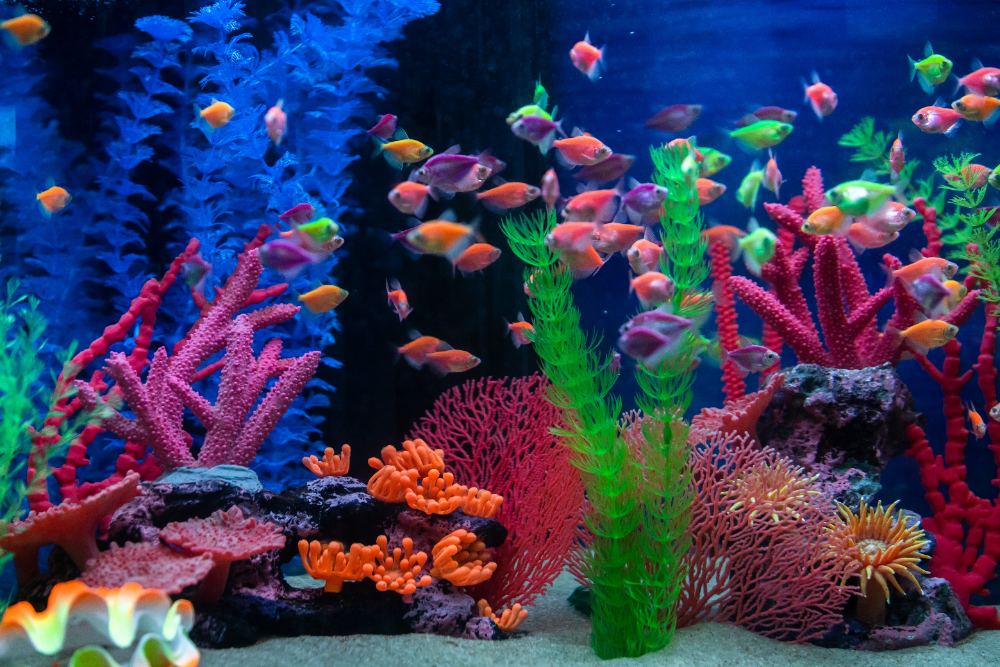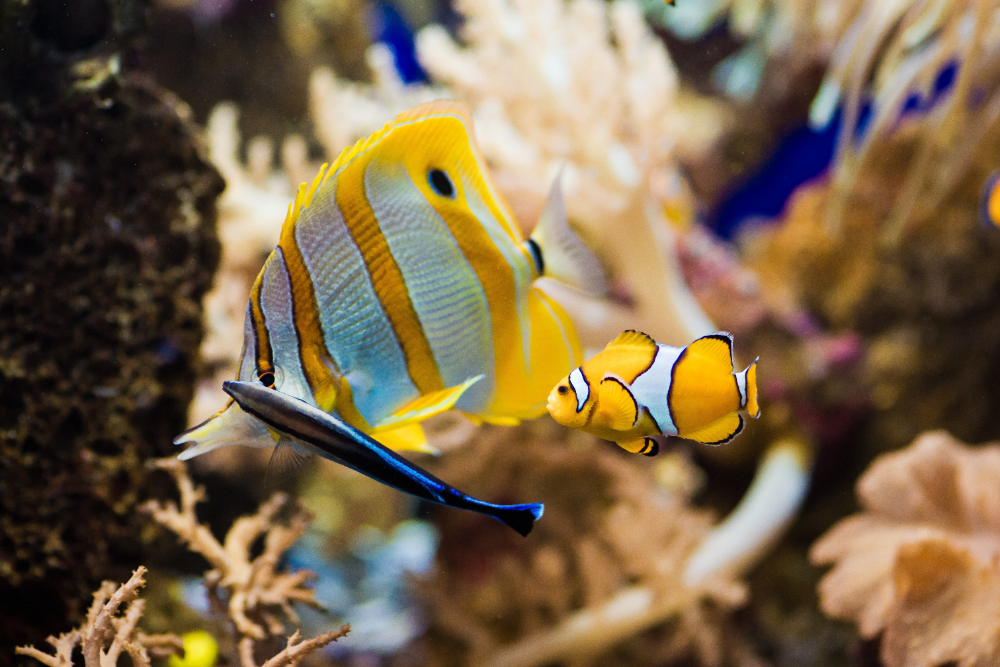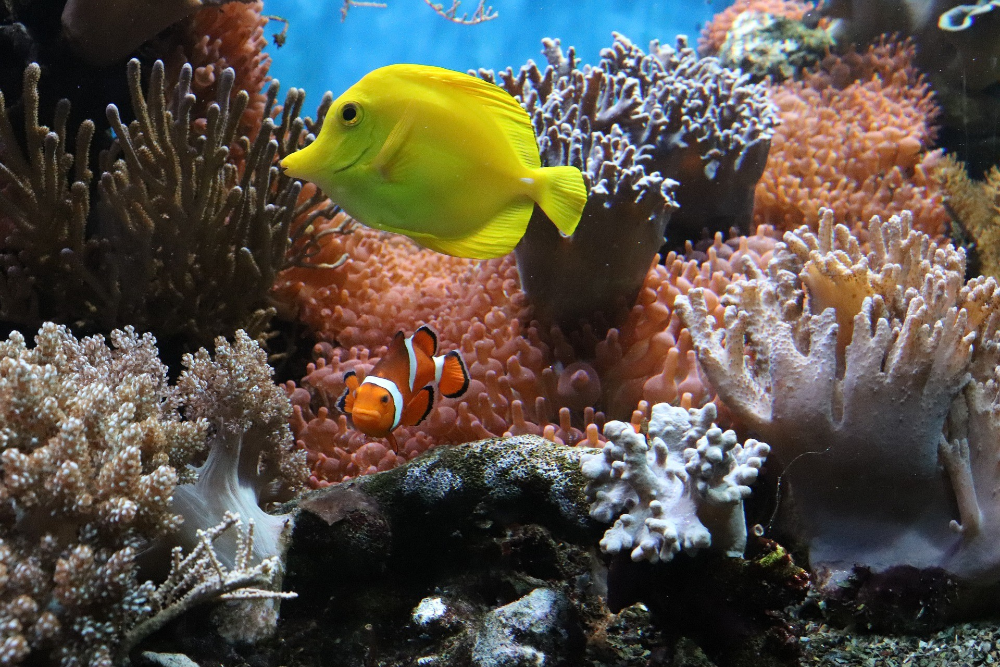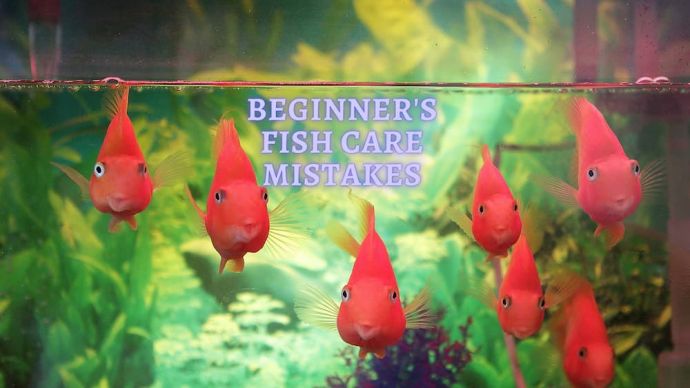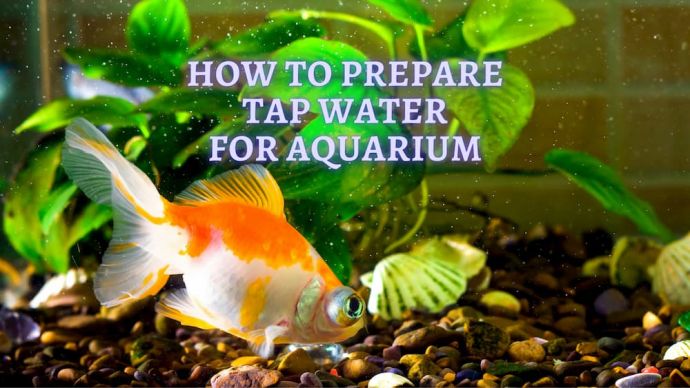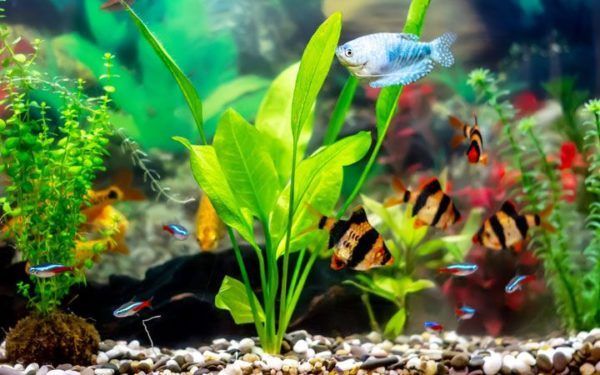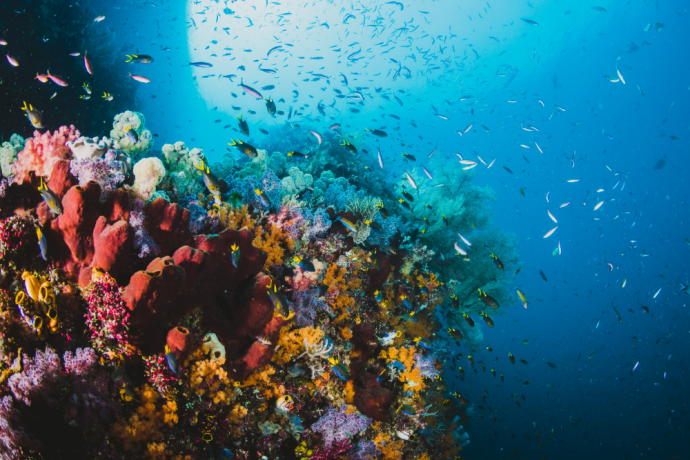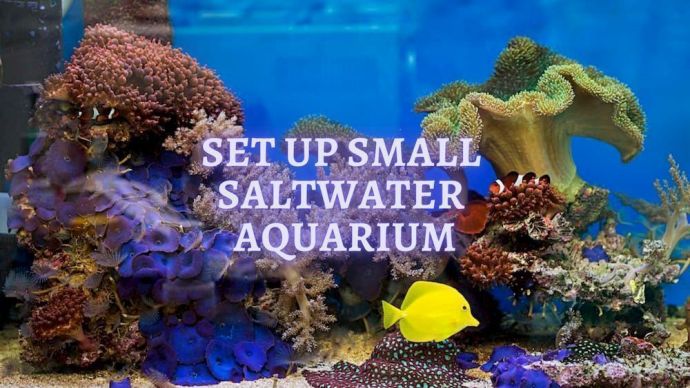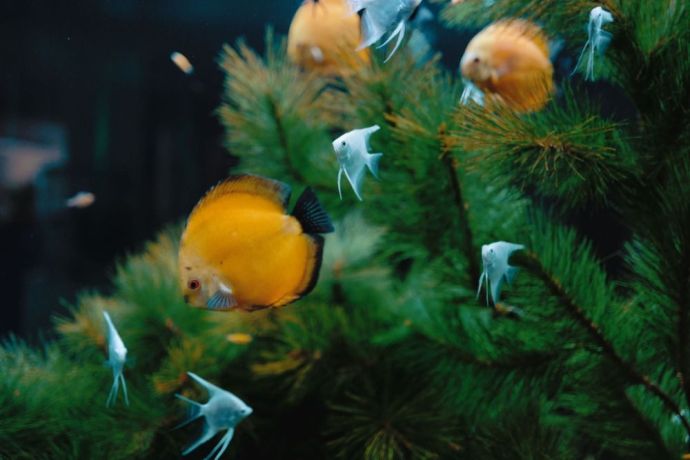Small Aquarium Guide: How to Set up a Small Fish Tank?
Written by:
Author: Vicki Smirnova
Vicki Smirnova is a professional writer and editor who adores animals and helps readers get along well with their pets. She has been working in digital media for more than 5 years and has great experience writing content about lifestyle, including pets. Vicki specializes in dog health and nutrition, cat feeding, dog training. She is an aquarium lover and is passionate to write about fish care at home. Also, Vicki headed several websites and worked as a news editor.
View all 244 articlesLearn about our editorial process and veterinary review board.
Viewed: 163
Updated on: 06/25/2021
Many people dream of their aquarium, but not everyone can have a large tank for various reasons like:
- Lack of money.
- Lack of space.
- Lack of knowledge on maintaining a big tank.
A real alternative is a mini aquarium, which takes up very little space and does not require complex care. Pet stores offer many different types of tanks, but they are all standard and a little boring.
Small aquariums are considered to be smaller than 7.9-10 gallons, usually from 1.3 to 5.2 gal. They are often called nano tanks. There are also micro aquariums whose capacity is 0.2-0.5 gal, but fish can’t live in such an tank, except for some types of snails.
A mini aquarium is an ideal option for a desktop in the office or the schoolroom. The interior items can create an atmosphere of peace and tranquility, develop conditions for concentration, or allow you to distract yourself.
You can always make a mini tank yourself. Let’s look at the main stages of building a mini aquarium.
How to Make a Mini Aquarium?
First, sketch the aquarium design. Remember that for fish, the volume should not be less than 1 gal. If such an tank is significant for you, you should think about replacing the fish with beautiful seaweed or shells.
Prepare with transparent silicone, glue, glass, and any degreaser. Use a glass cutter to cut the glass into the required size pieces. Degrease the edges with acetone or other solvent and glue them together. After drying, carefully seal the seams with transparent silicone and allow them to dry thoroughly. The accuracy and aesthetics of the final product directly depend on how slowly the work will be performed.
A round mini aquarium is better to make a transparent vase of the required size and shape.
Soil and Plants for a Mini Aquarium
After the glue has dried, you need to take care of its design. The soil can consist of any aquarium stones, pre-boiled in a weak solution of potassium permanganate. You can choose stones of the original shape and color.
Mini tanks are very convenient for growing some small species of plants because it is easier to create proper lighting in a mini tank. In large aquariums, the light does not reach the lower level in the required amount.
Live plants are needed in small aquariums, as they help to remove dangerous substances from the water — nitrites, nitrates, and ammonia. Also, plants in a mini-tank reduce stress in fish.
Plants for a mini aquarium and algae should be small enough so as not to take up space for fish to live in.
You can apply a particular decorative film that simulates an underwater landscape or plastic tank plants, also.
Lighting and Filter
It is easy to light your mini aquarium – you only need to make a cover of the glass, plastic, or other material and equip it with a lamp, a powerful diode, and a battery.
If your fish need oxygen-rich water, you should buy and install a small filter or compressor. If the tank inhabitants are fish that can breathe atmospheric air, then the screen will not be required.
It is essential to understand that the equipment of this type of aquarium with all kinds of devices will significantly reduce its aesthetic qualities.
What Fish can be kept in Mini Aquariums?
In a small, 2.6-5.2 gallon tank, you can settle fish with miniature body sizes, up to two inches. But remember that even small fish want to swim in a spacious environment. You cannot keep fish in containers that will limit movement.
In mini aquariums, you cannot settle territorial and aggressive fish. Fish like swordfish, cichlids, gourami, and danio are not suitable for a mini tank. These fish are active and energetic, and they need more space for hiding.
In 5 gallon aquariums, you can settle small fishes like barbules, Gertrudis, oryzias, rasboras, neons, and tetras. You can also keep Amano shrimp and cherry shrimp. Mind the size of your fish. With proper care, the fish will grow and become cramped. Plant large fish in large home reservoirs and replace them with young ones.
The owner needs to buy a species of fish with a robust immune system. They also often settle well-known Siamese cockerels. A cockerel can live alone, and it doesn’t get along with relatives, as it is a fighting fish.
READ MORE: Glass vs Acrylic Aquarium
Carefully study the compatibility of Species
Fish for a small tank should be selected depending on many factors. For beginners, it is difficult to observe all the nuances, so contact professionals who will help determine which fish can be kept together and which can not.
Important compatibility factors:
- Ability to survive singly. Some species can only live in flocks, so pay attention to this point first
- The characteristics of the water types should be approximately the same
- The peaceful character of the inhabitants
- The number of individuals depends on the surface area of the water
- Breed compatibility; sometimes peace-loving individual fish do not tolerate the neighborhood of each other
It is important to remember that small aquariums are a high-risk area for fish. Therefore, the choice of neighbors will ultimately determine the fate of your wards. You can have one fish that will be the mistress of your pond or keep a whole flock of miniature fish.
Caring for a Mini-Aquarium
Often parents buy mini tanks for their children, believing that a small aquarium is more natural to care for than a large one, but this is not true. The “underwater world” of a small size is subject to temperature changes and requires frequent water replacement.
If the water is rarely changed, fish waste accumulates on the walls, and it will be quite challenging to clean the container with your hands. If you want to prevent the appearance of algae, the tank should not be placed close to the window – it should not be exposed to direct sunlight.
With such a small amount of water, a drop of even a few degrees negatively affects the fish. Feed the fish a small amount of food so that there are no leftovers after feeding. The slightest excess of food that has lain at the bottom of such an aquarium instantly spoils the water, so remove the excess feed immediately.
You will need to change the water frequently, and a stock of settled water should always be nearby. Replacement of water in the tank should be carried out every three to four days, replacing at least a quarter of the volume of water in a small aquarium.
READ MORE: Cleaning a Freshwater Fish Tank
Design of a Small Aquarium
There are many forms of a small tank: cube, glass, trapezoid, hexagons, etc.
If you choose a small round aquarium, remember that outwardly round, and rectangular tanks may seem the same size, but around aquarium always has a lower volume.
You can create a nano-tank in different styles. You can decorate your aquarium with stones of different shapes, snags, or plants.
For the design of small aquariums, moss (small pieces) or Hemianthus are most often used, and from plants –Anublas, Microsorum, and Vesicularia.
In the case of small tanks, the appropriate solution is to abandon the fish and populate the reservoir with shrimps completely. Also, if there are shrimps in the aquarium, you should keep in mind that any objects protruding from the water can contribute to their escape from the tank.
READ MORE: Floating Plants for Aquarium
Advantages
The main advantages of mini models include the ability to place them almost anywhere: on a table, bookshelf, or in a wall. This aquarium is easy to transport, and you can quickly and easily relocate it.
The tank is also perfect for depositing young or mating fish. You can use it as an insulator, removing sick or newly acquired individuals.
As a rule, these miniature tanks are sold complete with all the necessary equipment. Pump, filters, lighting – all neatly and securely mounted itself; there are no extra wires.
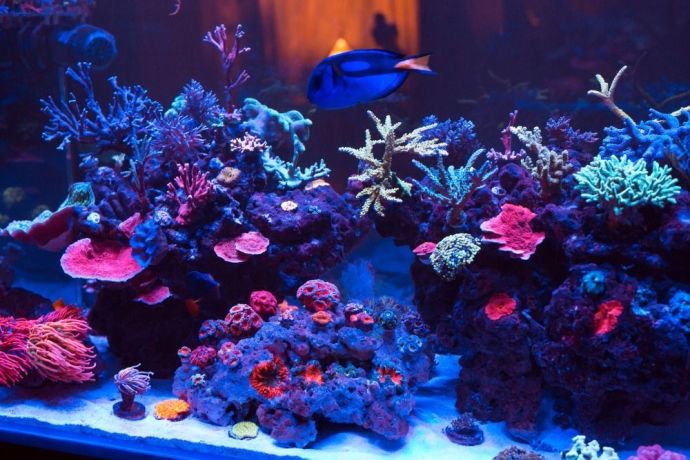 Fish Owners Tips Saltwater Refugiums: How to Make a Refugium for Saltwater Aquarium?
Fish Owners Tips Saltwater Refugiums: How to Make a Refugium for Saltwater Aquarium? - 780
- 0









